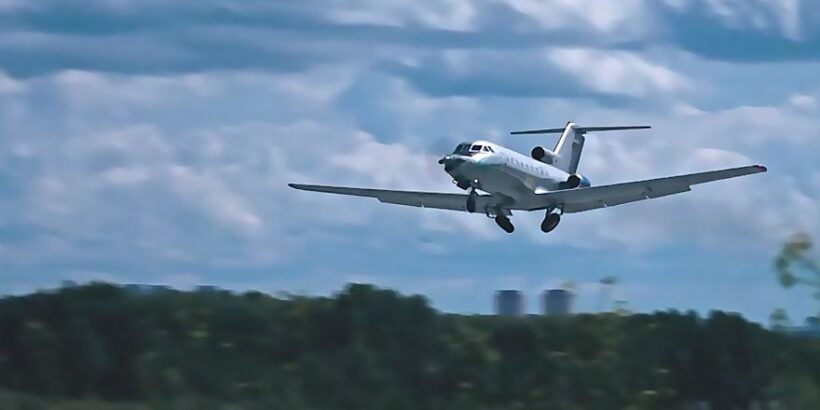On July 14, at the S.A. Chaplygin Siberian Aeronautical Research Institute (SibNIA) in Novosibirsk, the Yak-40LL flying testbed (registration 87251) completed its first flight powered by the VK-800SM turboprop engine. During the flight, engineers evaluated the powerplant’s performance, as well as its compliance with established safety and efficiency requirements under real flight conditions, prior to the start of certification testing. The flight lasted 15 minutes and 34 seconds, reaching an altitude of 2,300 feet (700 meters) and a maximum speed of 211 knots (340 km/h). SibNIA and Ural Civil Aviation Plant (UZGA), the engine’s developer, announced the results via their official channels.
These efforts support the upcoming certification trials of the VK-800SM engine installed on the Yak-40 flying laboratory. UZGA expects the test results to enable transition to the next phase—formal certification trials and preparations for serial production of the VK-800SM.
For safety reasons, the initial phase of in-flight engine testing precludes the use of single-engine aircraft, as installing the VK-800SM on such platforms introduces unacceptable risk of engine failure. The Yak-40, equipped with three AI-25 turbofan engines, was therefore chosen as the test platform. This configuration enables the aircraft to climb, cruise, and land safely regardless of the VK-800SM’s operational status, effectively serving as a real-world testbed for single-engine aircraft applications.
During the maiden flight, engineers verified the operation of the aircraft’s systems, the test engine’s systems, thermal profiles, hydraulic and electrical system integrity, and correct functioning of instrumentation. Post-flight, data from the monitoring and recording systems undergoes detailed analysis. Key performance parameters are determined from the engine’s internal operation, pressure metrics, and related data, explained SibNIA Director General Vladimir Barsuk.
The VK-800SM demonstrated stable performance throughout all flight phases. Thermal parameters remained within design limits. “Following the first test flight, the VK-800SM engine showed consistent operation, and all systems functioned nominally. Based on these results, a formal report will be prepared to authorize further testing,” commented test engineers.
Certification of the VK-800 engine and propeller for the LMS-901 “Baikal” light utility aircraft is scheduled for 2025, according to Anton Alikhanov, Minister of Industry and Trade of the Russian Federation, during the July 2 government briefing in the Federation Council. “Certification of the new VK-800 engine and propeller is ongoing. UZGA is expected to complete this phase by the end of the year,” Alikhanov stated.
In April 2025, the Ministry of Industry and Trade signed a contract with UZGA to upgrade and equip the LMS-901 “Baikal” with the VK-800SM engine and AV-901 propeller. The work is part of the State Program for the Development of the Aviation Industry. The government contract covers the fifth stage of the R&D project “LMS-5,” with type certification targeted by December 17, 2027. The contract is valued at over 10 billion rubles.
The VK-800SM turboprop engine follows a conventional gas turbine layout, featuring a centrifugal compressor, reverse-flow combustion chamber, single-stage compressor turbine, and a two-stage free power turbine. This architecture delivers an optimal balance of power and fuel efficiency for general aviation aircraft. The VK-800SM’s design solutions address key requirements for reliability and cost-effective operation in regional air transport environments.


